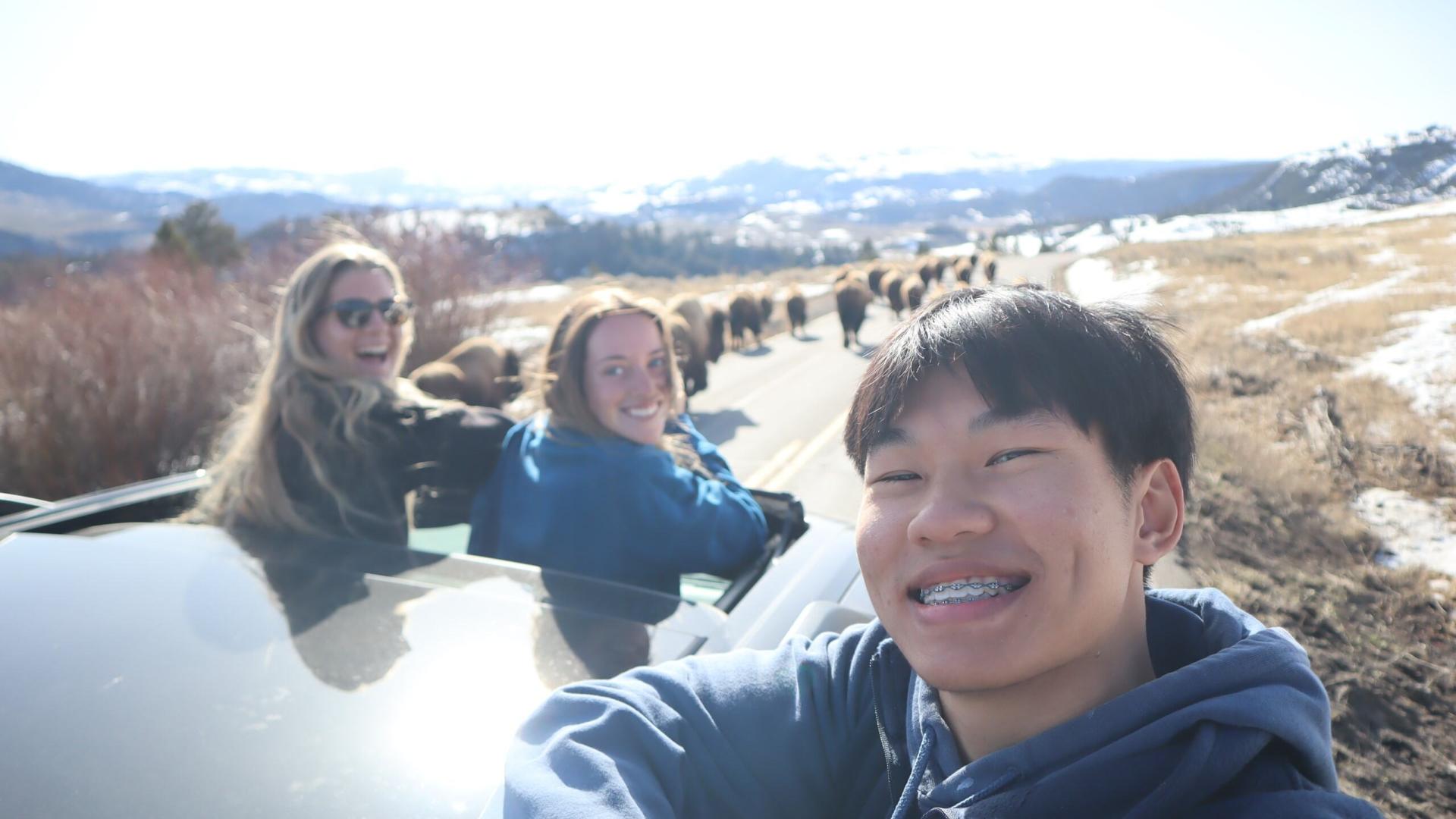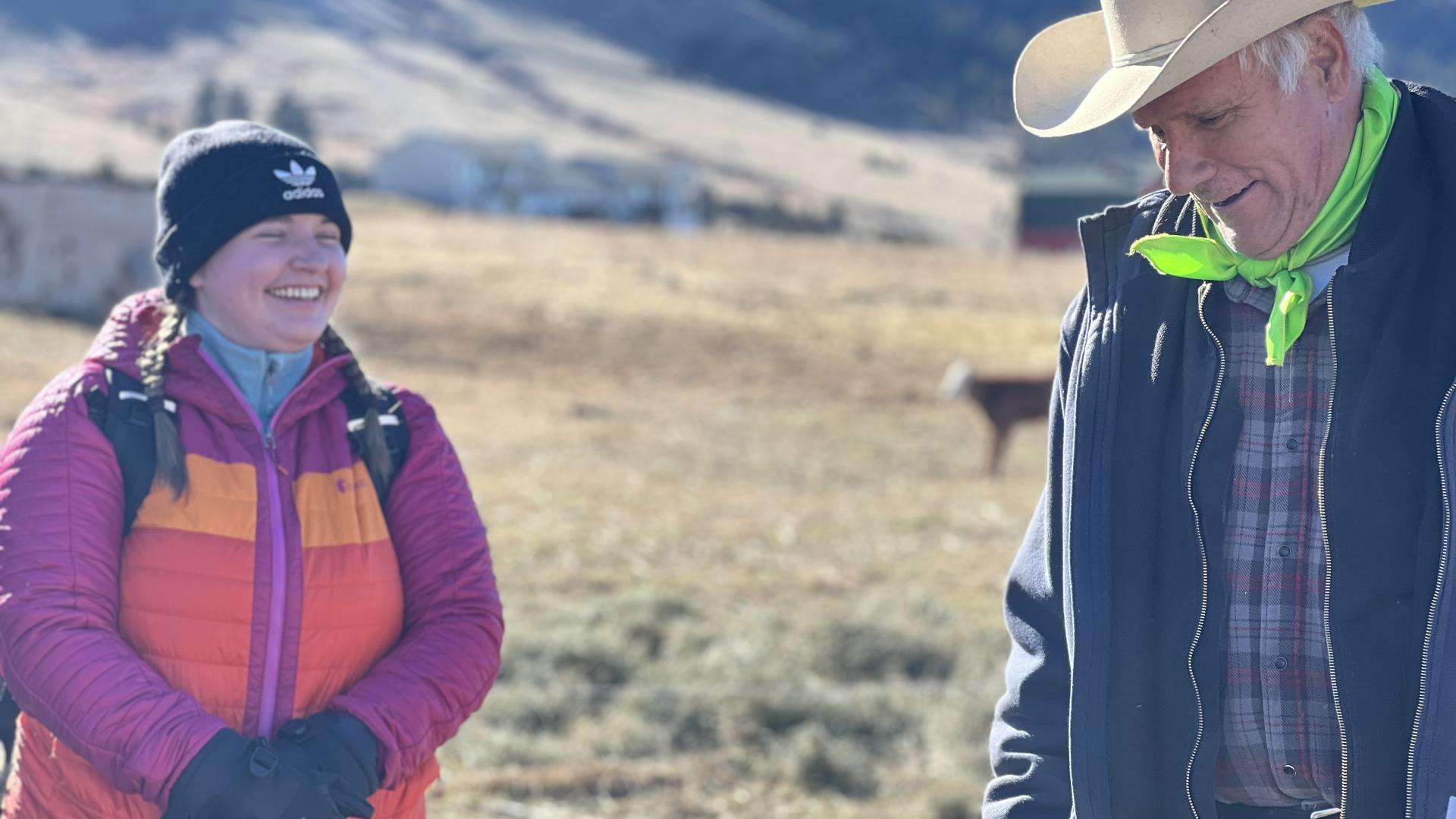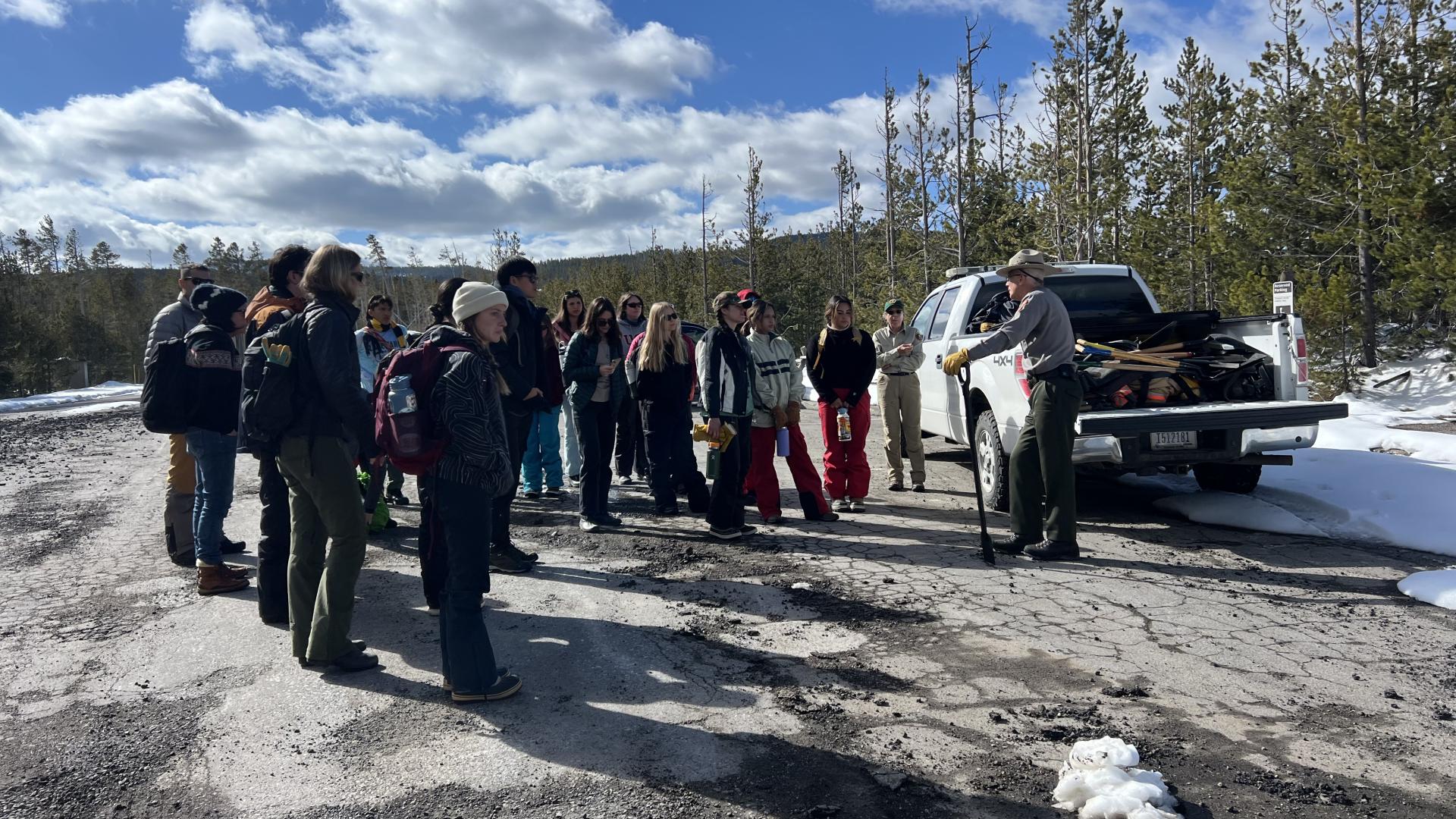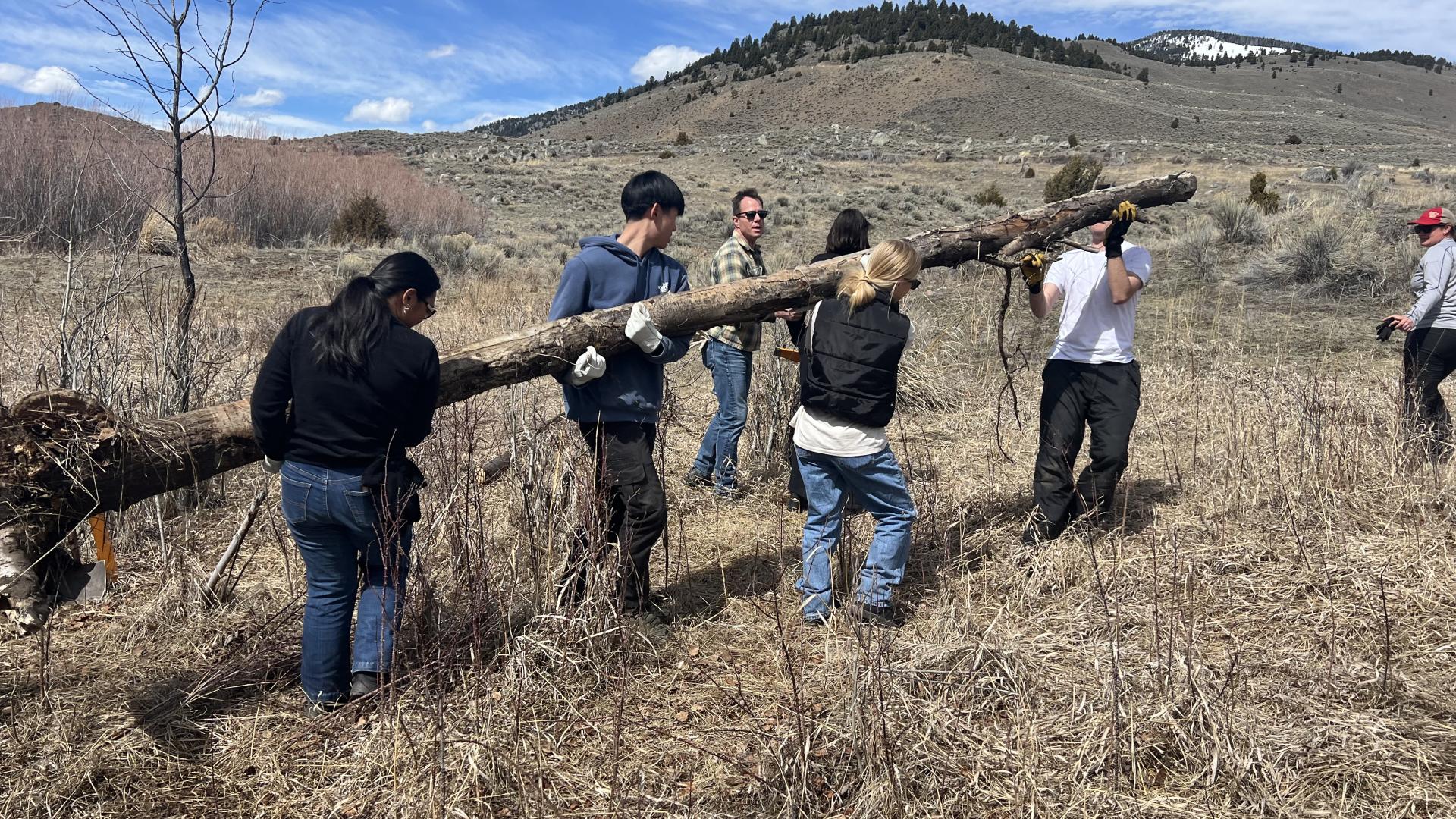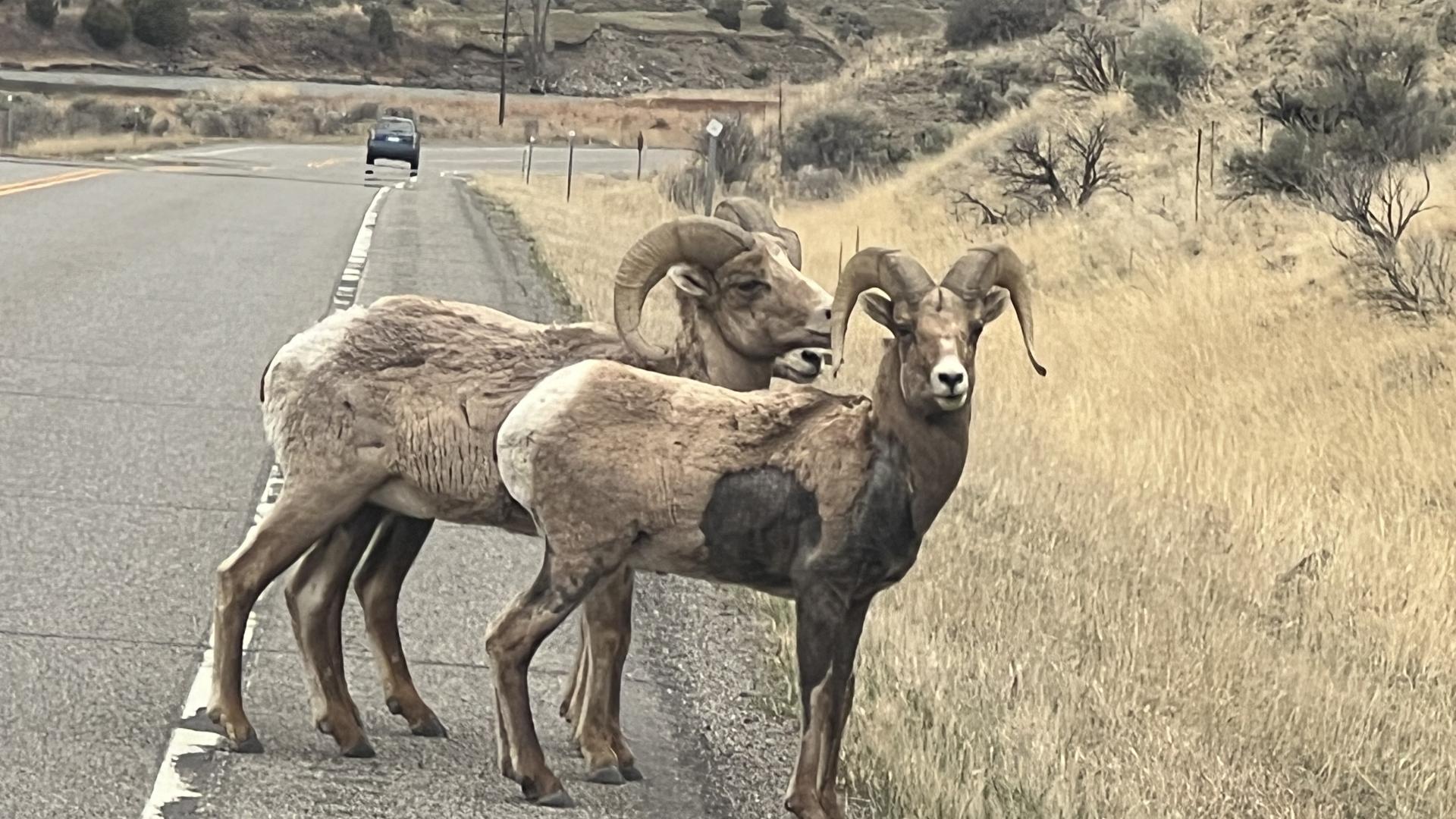Beach Students Gain Hands-On Experiences During Alternative Spring Break
Transformative and lasting learning opportunities occur beyond the classroom – when students can implement their knowledge, connect with their peers, develop new skills, and gain unforgettable experiences.
The CSULB Alternative Spring Break program is one of the many immersive service learning and engagement opportunities that students can benefit from during their time at The Beach.
Over the past spring break, Environmental Science and Policy program Faculty and Advisor, Dr. Monica Argandoña, and Associate Dean of Students, Dr. Trace Camacho, led a group of 19 CSULB students to learn and do service work with various organizations and stakeholders in and around Yellowstone National Park.
Alternative Spring Break participants enrolled in “The Greater Yellowstone Ecosystem: Politics, Culture, and Science” course. Here, students could learn about America’s first and most iconic national park, its surrounding management issues, and the various social and environmental challenges within the Greater Yellowstone Ecosystem.
Students had the opportunity to visit the national park during their spring break, as they learned about governance work and civic engagement. The learners also met with stakeholders who have a vested interest in the management policy within Yellowstone and the surrounding areas.
Dr. Argandoña, who teaches in Environmental Science & Policy and also serves as the Director of the Sustainability Management and Policy MS degree program shares, “For many of [the students], this was their first time experiencing this land and they did so unlike a park visitor. They learned firsthand how nearby ranchers coexist with predators on the landscape, but also discussed the economic challenges this brings to more traditional ranchers.”
This unique opportunity also allowed the 19 students to work with the National Park Service at Norris Geyser Basin. Students shoveled snow off the boardwalk to ensure it was visitor-ready and could network with the local Park Service rangers. The rangers shared their honest accounts of the challenges of park management and their daily job duties.
Additionally, during the alternative spring break trip, Beach students had the chance to mend a fence in the Gallatin National Forest to protect Aspen from beavers. This experience shed light on the controversies and complexities of public land management. As part of the course, students also engaged in conversations with numerous stakeholders from hunters and ranchers to wolf watchers and naturalists. This experience highlighted the importance of listening to the diverse perspectives of others and allowed students to understand the politics and culture in the surrounding area.
Dr. Argandoña also shares the excitement our students experienced throughout their spring break. She notes, “Many [students] experienced snow for the first time. We also saw bison, elk, pronghorn, mountain goats, big horn sheep, moose, and wolves.” These are unforgettable opportunities that our students are certain to carry with them throughout their educational journey.
The Alternative Spring Break program offered our students a unique opportunity to learn from the best working professionals and environmental experts, learn how to navigate differing perspectives, serve the greater community, and form lasting relationships and experiences.
